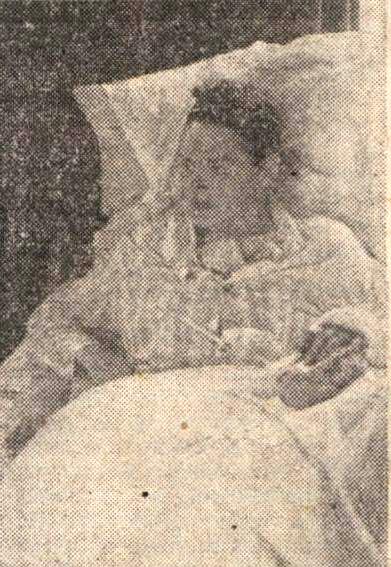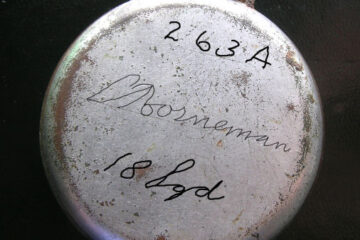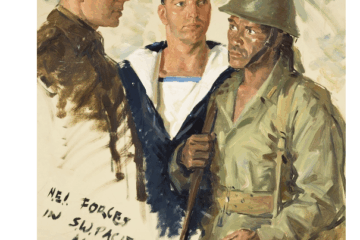The first (and only?) United Nations’ casualties in its involvement in the Indonesian war of
independence 1945-50. By ACT Branch Member Graham Rayner.
At about ten o’clock on the morning of 18th March 1949 a Dutch military jeep, painted white and clearly marked as “UNITED NATIONS” was ambushed by what were presumed to be militant Indonesian republicans on a lonely stretch of road 14 kilometres from their destination. They had been travelling from Medan, near the north-east coast of Sumatra, to Kabanjahe in the central highlands and were attacked near the village of Berastagi (in all contemporary documentation the village was spelt as Brastagi). The attackers had waited until the vehicle had passed their location on a hair-pin bend before opening fire into the back of the jeep. 25 bullet holes were later counted in the jeep Australia was involved in the consequent investigation.
The article start on page 4 of the newsletter below.
Roderic Paul Marie baron van Voorst tot Voorst
Source: The Dutch Armed Forces
Police Actions Indonesia
Roderic Paul Marie baron van Voorst tot Voorst (born in Zwolle, on 27 May 1917, died in Zwolle on 1 April 1988) attended the gymnasium at the Laan vanTe Batavia Meerdervoort in The Hague and obtained his exam diploma A in June 1939. During the Police Actions he was in the rank of reserve first lieutenant of the cavalry working as a liason officer and with the first escadron armored weapons Hussars of Boreel active.
In the position of liaison officer he accompanied a group of observers from the United Nations Committee for Indonesia, including the English lieutenant colonel H.D. Chaplin and the American major J.A. Simons, who were unarmed according to the rules in force at the time. They were in a white jeep and Van Voorst tot Voorst was in the back of the car. He was armed with an Owengun because the plateau through which one had to pass was known to be very dangerous.
The gun fight

Between Medan and Brastagi, at pole 53, the jeep was taken under automatic gunfire, injuring all occupants. Chaplin was wounded and lost control of the steering wheel, causing the car to end up at the bottom of the mountainside. Van Voorst tot Voorst, however, remained calm and shouted at the attackers in Indonesian that they were shooting at a delegation from the U.N. But this had no effect, forcing Van Voorst tot Voorst to maintain a targeted fire on the enemy for half an hour.
He finally managed to drag the wounded to the alang alang, while he kept firing with his Australian Owengun to keep the enemy at a distance. This fire wounded his hands, legs and thighs. The enemy eventually pulled off and van Voorst tot Voorst managed to stop a Chinese bus, which took him and the two other wounded on board. All three were hospitalized in Medan.
Appreciation
The foreign observers were full of praise for the very courageous action of Van Voorst tot Voorst and said that his attitude had made him extremely brave and decisive under very difficult circumstances, so that the damage had been limited. By Royal Decree of 25 October 1949 he was awarded the Bronze Lion for his achievements.
The commander of the Territorial Forces of North Sumatra, General P. Scholten, visited the hospital and the three wounded during a visit to General Scholten and the French Colonel Ansidéé, expressed his great admiration and gratitude for the brave action of Van Voorst tot Voorst, who had saved the lives of the observers by his actions.
Later career
Van Voorst tot Voorst was appointed chamberlain in the extraordinary service of Her Majesty the Queen of the Netherlands on 1 November 1953; he was then living in Zwolle and was deputy director of the Overijsselse Onderlinge Brandwaarborg Maatschappij (from December 1964 as director). In 1962 he accompanied the carriage containing the coffin of Queen Wilhelmina during the route through The Hague and in June 1963 he was present at the requiem mass of Pope John XXIII in Vatican City.
From 1961, Van Voorst tot Voorst was also active as chancellor of the chapter of the Sovereign and Military Order of Malta. In December 1964 he was appointed delegate of the management of the Overijsselse Onderlinge and on 1 January 1977 he was appointed heemraad of the Salland water board. Together with Minister van der Klaauw and others, he represented the Dutch government in August 1978 during the funeral of Pope Paulus VI in Rome. In July 1987 Queen Beatrix awarded him the honorary cross in the House Order of Orange and the following year Van Voorst tot Voorst died in Zwolle at the age of 70.
Sources
1939. Gymnasium Laan van Meerdervoort. In: De Tijd, 5 June 1939
1949. The shelling of the white jeep. In: Het Nieuwsblad van Sumatra, 21 March 1949
1953. Chamberlains in extraordinary service. In: Limburgs Dagblad, 4 November 1953
1961. Levensjournaal Orde van Malta. In: De Telegraaf, 18 December 1961
1962. De lijkstatie. In: De Telegraaf, 10 December 1962
1963. Special mission to Vatican City. In: Het Vrije Volk, 14 June 1963
1977. In brief. In: Het Nederlands Dagblad, 8 February 1977
1978. Van der Klaauw to pope’s funeral. In: de Leeuwarder Courant, 11 August 1978
1987. House of Orange. In: De Telegraaf, 4 July 1987


